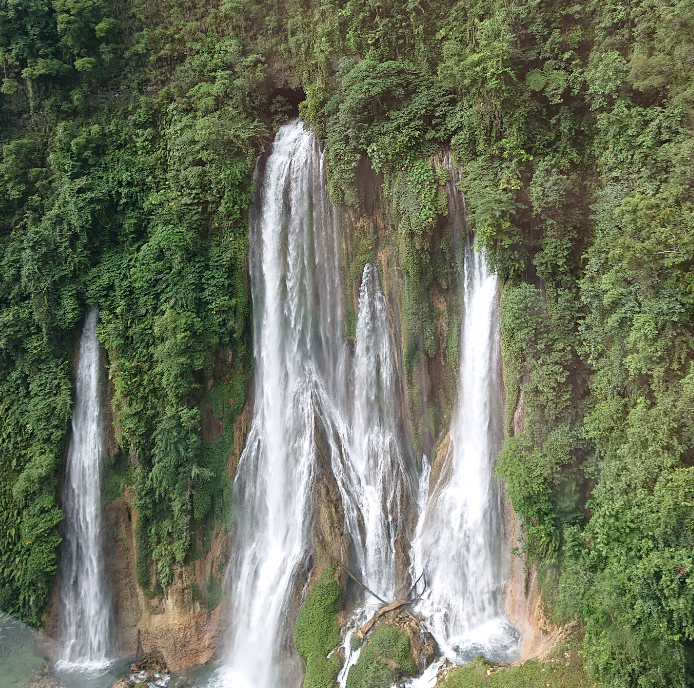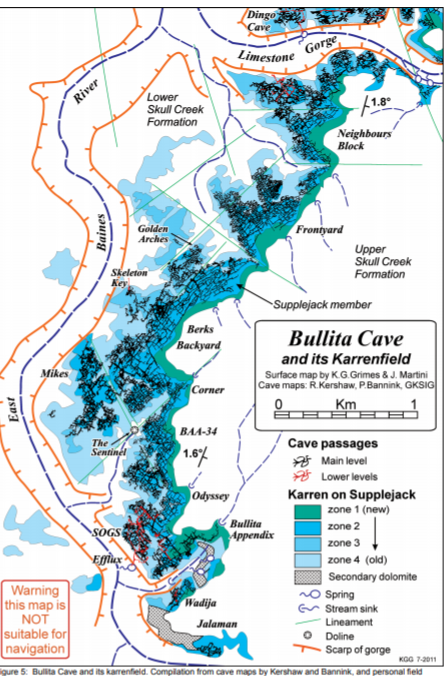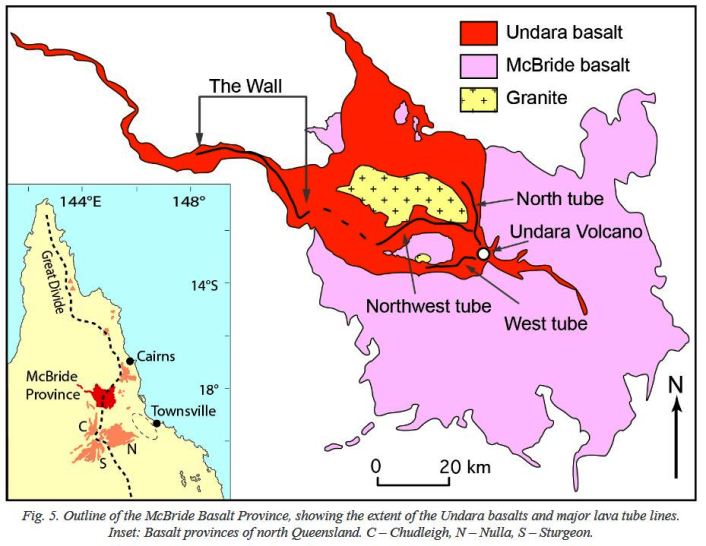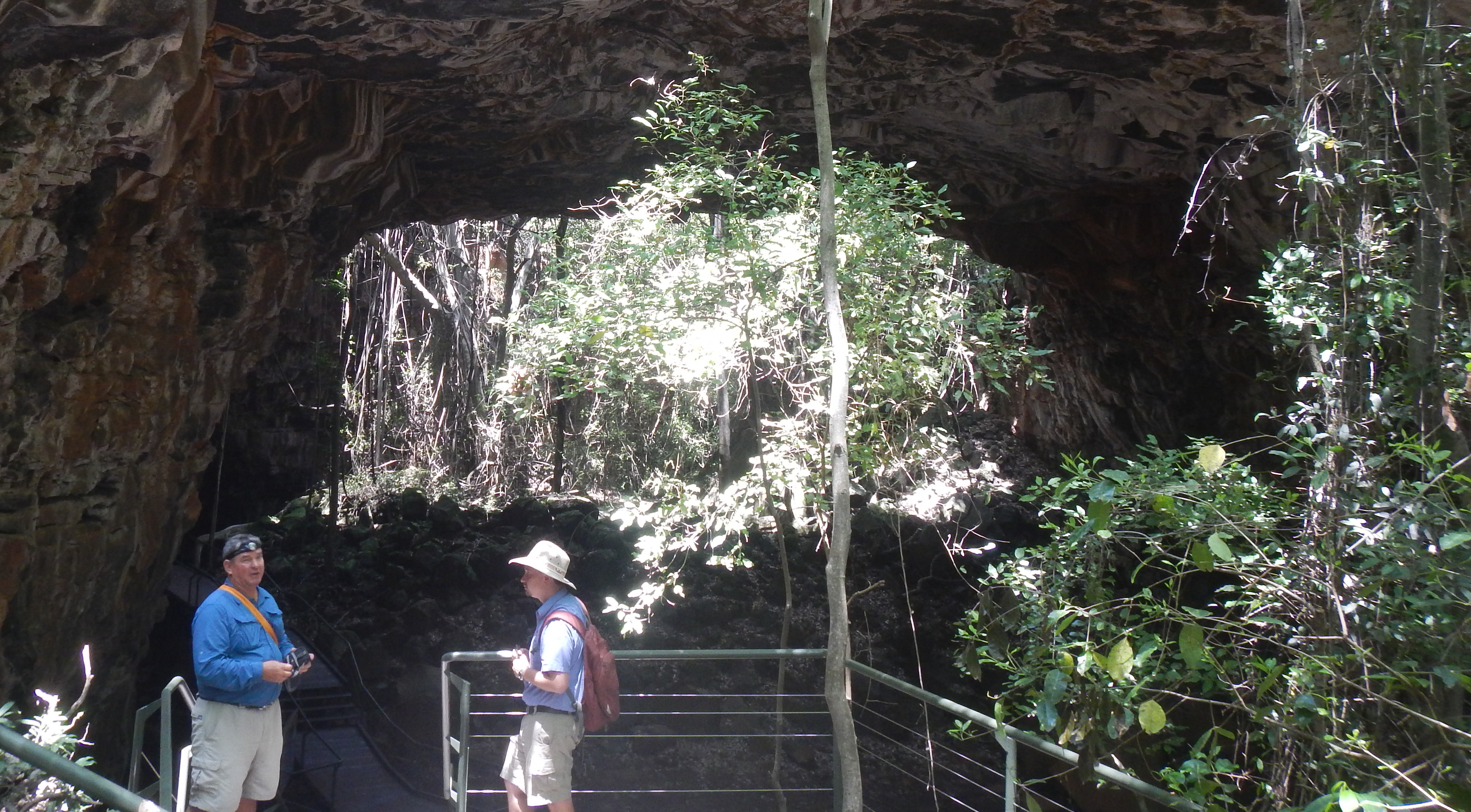GEOGRAPHIC EXTREMES SOCIETY
AUSTRALIAN RECORDS
Caves
On a world scale, Australia isn’t endowed with the plethora of caves that can be found on other continents. North America and South-east Asia have a far greater diversity of cave systems than Australia. Spain, France and Germany have extensive cave systems renowned for their prehistoric art bodies, prehistoric cave fauna, and fossilised remains. There are some massive cave systems close to this continent with some of the southern hemisphere’s largest lying just to the north of Australia on the island of New Britain in Papua New Guinea. Here the uplifted limestone mountains have formed a network of vast underground rivers, massive sink-holes and incredible waterfalls gushing with immense quantities of water, appearing apparently from nowhere on cliff faces.

Underground rivers of the Pomio District. New Britain PNG. Image: RJ Andrews
The formation of the vast majority of cave systems around the world are a result of the chemical weathering of limestone rocks, known as ‘karst’, most typically laid down as ancient coral reef systems. Unlike North America and Eurasia, the Australian continent wasn’t endowed with extensive limestone deposits and karst formations. The one great exception to this, and something we have already touched upon, is the vast Nullarbor Plain region, which forms a 200,000 km2 limestone outcrop—making it singularly one of the world’s greatest limestone deposits. And the caves which have developed within the Nullarbor karst are world-class
Longest Cave Dive in the World
The most famous of all the Nullarbor caves is, most definitely, Western Australia’s Cocklebiddy Cave. Cavers, and the growing community of cave-divers, flock to Cocklebiddy Cave because the single, extensive passage provides the longest cave-dive in the world, at over six and a half kilometres in length. In 1983 a French diving expedition set the world record for a cave dive at Cocklebiddy only for it to be beaten by an Australian team a few months later. In 1995 the new record was set at 5,310 metres of underwater passage by Chris Browne.

Cocklebiddy Cave. Longest cave dive in the world. Image : artofscubadiving
Oldest Caves in Australia
Further to the south, the Jenolan Caves west of Sydney are Australia’s most-visited caves, and recent studies show that they are one of the world’s oldest open cave systems. In 2006, CSIRO and University of Sydney researchers dated the cave system to be 340 million years old. The same ancient age is inferred at the Yerrongabilly Caves system in the Snowy Mountains. However, Joe Jennings from the Australian National University in Canberra thinks that with further exploration, the Chillagoe Cave system in Far North Queensland may turn out to be twice the age of the Jenolan caves.

Jenolan Caves. Oldest Caves in the world? Image: Jenolan Caves Trust
Deepest Caves In Australia
The deepest caves in Australia lie on the edge of Tasmania’s Southwest Wilderness Area near the timber town of Maydena. Here, the Ice Tube Cave within the Junee Cave system reaches a depth of 345 metres below the surface. Close by is the Niggly Cave which is still awaiting thorough exploration, but which currently holds the Australian record at a depth of 397.7 metres. Chris Sharples from the University of Tasmania is confident that with increased research, Niggly Cave will go past the 400-metre depth mark.
Longest Caves in Australia
The longest cave system in Australia is the Bullita Caves in the Judburra Gregory National Park in the Northern Territory. Exploration of the system at Bullita is still ongoing, but so far, the central karst section has recorded an incredible 123 kilometres of passages [5]. The caves system is said to resemble a maze of passages, many in the process of still being formed. While cavers marvel at the labyrinth of passageways within this karst deposit, non-cavers and travellers like myself can walk amongst giant stromatolites fossilised on top of the limestone caves system. Some of the stromatolite heads in the Bullita limestone, measure over twenty metres wide, ranking them amongst the largest known.

Bullita Caves. Longest cave system in Australia. Image Grimes and Martini 2012
Lava Caves
Limestone is compelling for its extraordinary ability to create caves but in Far North Queensland another type of cave has developed. These are the sub-surface caverns we call lava tubes. The Undara Lava Tubes of FNQ is one of the world’s finest examples of these unique cave formations. The Undara volcano erupted 190,000 years ago and expelled an estimated 23km3 of basaltic lava onto the surface, blanketing 1,550km2 of surrounding countryside.

The longest lava tube in Australia is Bayliss Cave, at just over 1.3 kilometres, whereas the longest in the world is the staggeringly-long 65.5-kilometre-long Kazumura tube in Hawaii.

Undara Lava Tubes. Longest lava tubes in Australia. Image: RJ Andrews
Cave Records
GES Record: Longest cave dive in the world. – Cocklebiddy Cave. Western Australia. 5,310 metres (Source: Cave Divers Assoc of Australia)
GES Record: Oldest open cave system in the world – Jenolan and Yerrongabilly Caves. New South Wales. 340 million years old. (possibility of Chillagoe caves being older) (Source: Armstrong Osborne. USYD 2006)
GES Record: Deepest Cave in Australia – Niggly Cave. Junee Cave system. Tasmania 397.7 metres below the surface. (Source: Caves Australia. September 2019)
GES Record: Coldest cave system – Junee Caves Tasmania. (Source: Chris Sharples UTAS 2019)
GES Record: Longest caves system in Australia – Bullita Caves. Judburra Gregory National Park. Northern Territory. 123 kilometres (Source: Mark Sefton)
GES Record: Longest Lava tube in Australia – Bayliss Cave. Undara Lava Tubes. Queensland. 1.3 kilometres. (Source: Caves Australia. September 2019)
GES Record: Longest Lava Tube in the world – Kazumura Cave. Kilauea Volcano. Hawaiʻi. Hawaii. USA. 65.5 kilometres long (Source: Caves Australia. September 2019)
The Geographic Extremes Society welcomes any input as to the veracity of these records and we encourage everyone to contribute to these extreme records by contacting us to initiate the discussion
